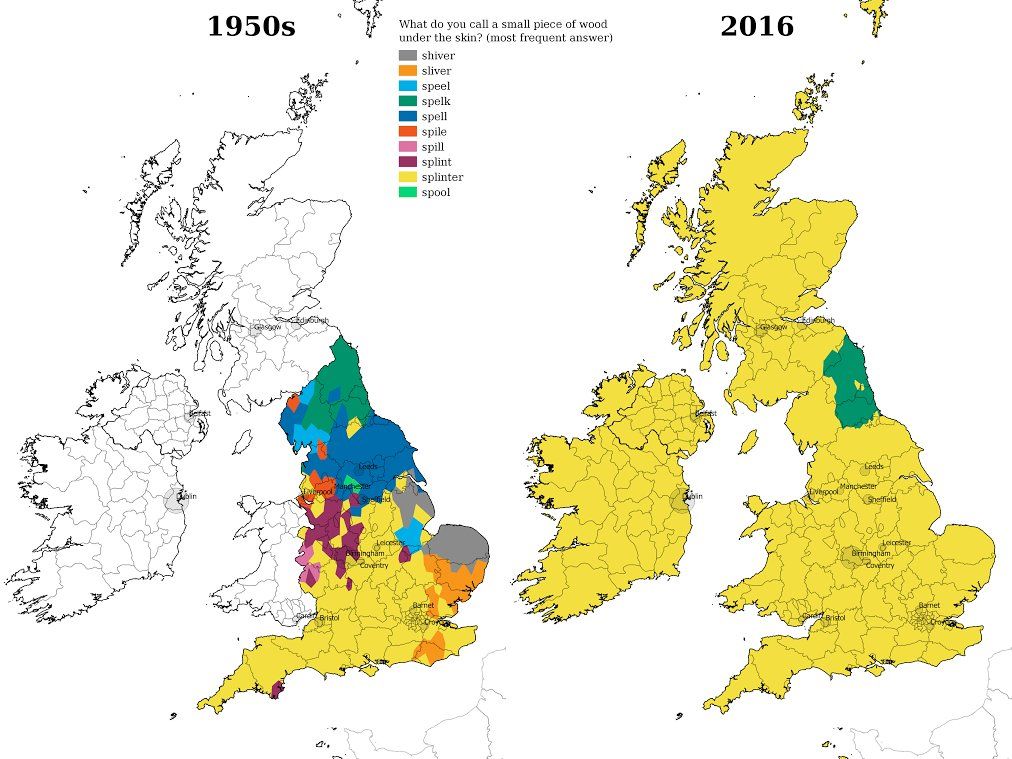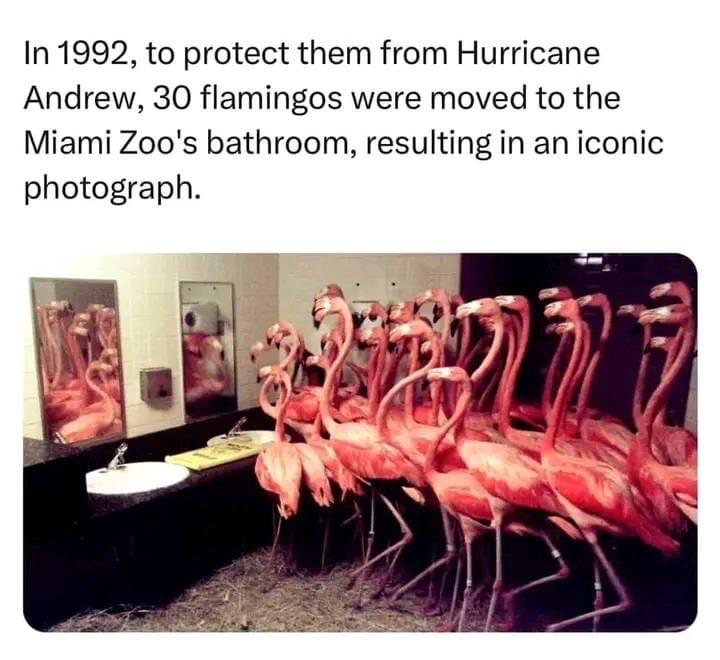Mildly interesting
-
Giovanni Battista Bugatti, the official executioner for the Papal States from 1796 to 1864, executed over 500 people during his 68-year tenure.
Bugatti’s tools and clothing became historical artifacts, reflecting the period’s harsh justice system. His execution methods included beheading and garroting, and he retired with honor at the age of 85.

-
@George-K said in Mildly interesting:
In fairness, he probably didn't have a set of goggles, but...

Side note: that was a funny skit!!
-
-
In Wales there is a legal requirement for road signs to be in both English and Welsh. In this case, the official of the Highways department emailed the English wording to the translator and, after receiving a reply, proceeded to have the sign made and installed. A few weeks later, Welsh-speaking drivers began to call up to point out that the Welsh reads, "I am currently out of the office. Please submit any work to the translation team."
Credit they walk among us.
-
I suppose we would have to determine if the ability of a mosquito biting animals is something of any value.
@mark said in Mildly interesting:
I suppose we would have to determine if the ability of a mosquito biting animals is something of any value.
Many animals rely on mosquitoes as a part of their diet, playing an important role in maintaining ecological balance. Here are some key examples:
Insects and Arthropods:
- Dragonflies – Both dragonfly adults and larvae (nymphs) feed on mosquitoes, especially during the mosquito’s aquatic larval stage.
- Damselflies – Similar to dragonflies, damselflies prey on mosquitoes in both their larval and adult stages.
- Spiders – Various species of spiders capture mosquitoes in their webs as part of their diet.
- Beetles – Some species of beetles, particularly aquatic ones, feed on mosquito larvae.
Birds:
- Swallows – These birds are known for catching mosquitoes and other flying insects in flight.
- Purple Martins – A species of swallow, Purple Martins are believed to eat mosquitoes, though they generally feed on a wide variety of flying insects.
- Bats – Many species of bats consume mosquitoes, although mosquitoes form only a small part of their overall diet.
Fish:
- Mosquitofish – These small freshwater fish (Gambusia) are known to eat large numbers of mosquito larvae in ponds and wetlands.
- Guppies – In some areas, guppies are introduced to help control mosquito populations by consuming their larvae.
Amphibians:
- Frogs and Tadpoles – Tadpoles of some frog species consume mosquito larvae, and adult frogs may eat adult mosquitoes as part of their diet.
- Newts and Salamanders – These amphibians, especially in their larval stages, may feed on mosquito larvae.
Reptiles:
- Lizards – In some regions, small lizards may eat mosquitoes, although this is not a primary food source for most species.
While mosquitoes are a nuisance to humans, they play a role in many food webs, especially in wetland ecosystems where they contribute to the diets of various species.
-
TV and even radio started it, with the internet it just accelerates.
D’Oh - do you remember hearing or using any of these alternatives as a kid?
@jon-nyc said in Mildly interesting:
D’Oh - do you remember hearing or using any of these alternatives as a kid?
Not really, I'm not sure I believe the graph. In the 70's it was definitely a splinter where I grew up, although I've heard the term 'sliver' used.
-
The V75 Liquid Tire Chain was a rare 1969-only option for most Chevrolets (excluding wagons and pickups). It featured rear nozzles that sprayed a traction fluid onto the tires, improving grip on snow and ice. Though short-lived, this unique system added safety and innovation to winter driving, making it a prized feature among collectors today.

-
I love the way they say humans have never set foot there then show you pictures of them.
-
@mark said in Mildly interesting:
I suppose we would have to determine if the ability of a mosquito biting animals is something of any value.
Many animals rely on mosquitoes as a part of their diet, playing an important role in maintaining ecological balance. Here are some key examples:
Insects and Arthropods:
- Dragonflies – Both dragonfly adults and larvae (nymphs) feed on mosquitoes, especially during the mosquito’s aquatic larval stage.
- Damselflies – Similar to dragonflies, damselflies prey on mosquitoes in both their larval and adult stages.
- Spiders – Various species of spiders capture mosquitoes in their webs as part of their diet.
- Beetles – Some species of beetles, particularly aquatic ones, feed on mosquito larvae.
Birds:
- Swallows – These birds are known for catching mosquitoes and other flying insects in flight.
- Purple Martins – A species of swallow, Purple Martins are believed to eat mosquitoes, though they generally feed on a wide variety of flying insects.
- Bats – Many species of bats consume mosquitoes, although mosquitoes form only a small part of their overall diet.
Fish:
- Mosquitofish – These small freshwater fish (Gambusia) are known to eat large numbers of mosquito larvae in ponds and wetlands.
- Guppies – In some areas, guppies are introduced to help control mosquito populations by consuming their larvae.
Amphibians:
- Frogs and Tadpoles – Tadpoles of some frog species consume mosquito larvae, and adult frogs may eat adult mosquitoes as part of their diet.
- Newts and Salamanders – These amphibians, especially in their larval stages, may feed on mosquito larvae.
Reptiles:
- Lizards – In some regions, small lizards may eat mosquitoes, although this is not a primary food source for most species.
While mosquitoes are a nuisance to humans, they play a role in many food webs, especially in wetland ecosystems where they contribute to the diets of various species.
@George-K said in Mildly interesting:
@mark said in Mildly interesting:
I suppose we would have to determine if the ability of a mosquito biting animals is something of any value.
Many animals rely on mosquitoes as a part of their diet, playing an important role in maintaining ecological balance. Here are some key examples:
Insects and Arthropods:
- Dragonflies – Both dragonfly adults and larvae (nymphs) feed on mosquitoes, especially during the mosquito’s aquatic larval stage.
- Damselflies – Similar to dragonflies, damselflies prey on mosquitoes in both their larval and adult stages.
- Spiders – Various species of spiders capture mosquitoes in their webs as part of their diet.
- Beetles – Some species of beetles, particularly aquatic ones, feed on mosquito larvae.
Birds:
- Swallows – These birds are known for catching mosquitoes and other flying insects in flight.
- Purple Martins – A species of swallow, Purple Martins are believed to eat mosquitoes, though they generally feed on a wide variety of flying insects.
- Bats – Many species of bats consume mosquitoes, although mosquitoes form only a small part of their overall diet.
Fish:
- Mosquitofish – These small freshwater fish (Gambusia) are known to eat large numbers of mosquito larvae in ponds and wetlands.
- Guppies – In some areas, guppies are introduced to help control mosquito populations by consuming their larvae.
Amphibians:
- Frogs and Tadpoles – Tadpoles of some frog species consume mosquito larvae, and adult frogs may eat adult mosquitoes as part of their diet.
- Newts and Salamanders – These amphibians, especially in their larval stages, may feed on mosquito larvae.
Reptiles:
- Lizards – In some regions, small lizards may eat mosquitoes, although this is not a primary food source for most species.
While mosquitoes are a nuisance to humans, they play a role in many food webs, especially in wetland ecosystems where they contribute to the diets of various species.
What does that have to do with the ability of the female to bite animals?
And they "contribute" but they aren't the entire diet.


